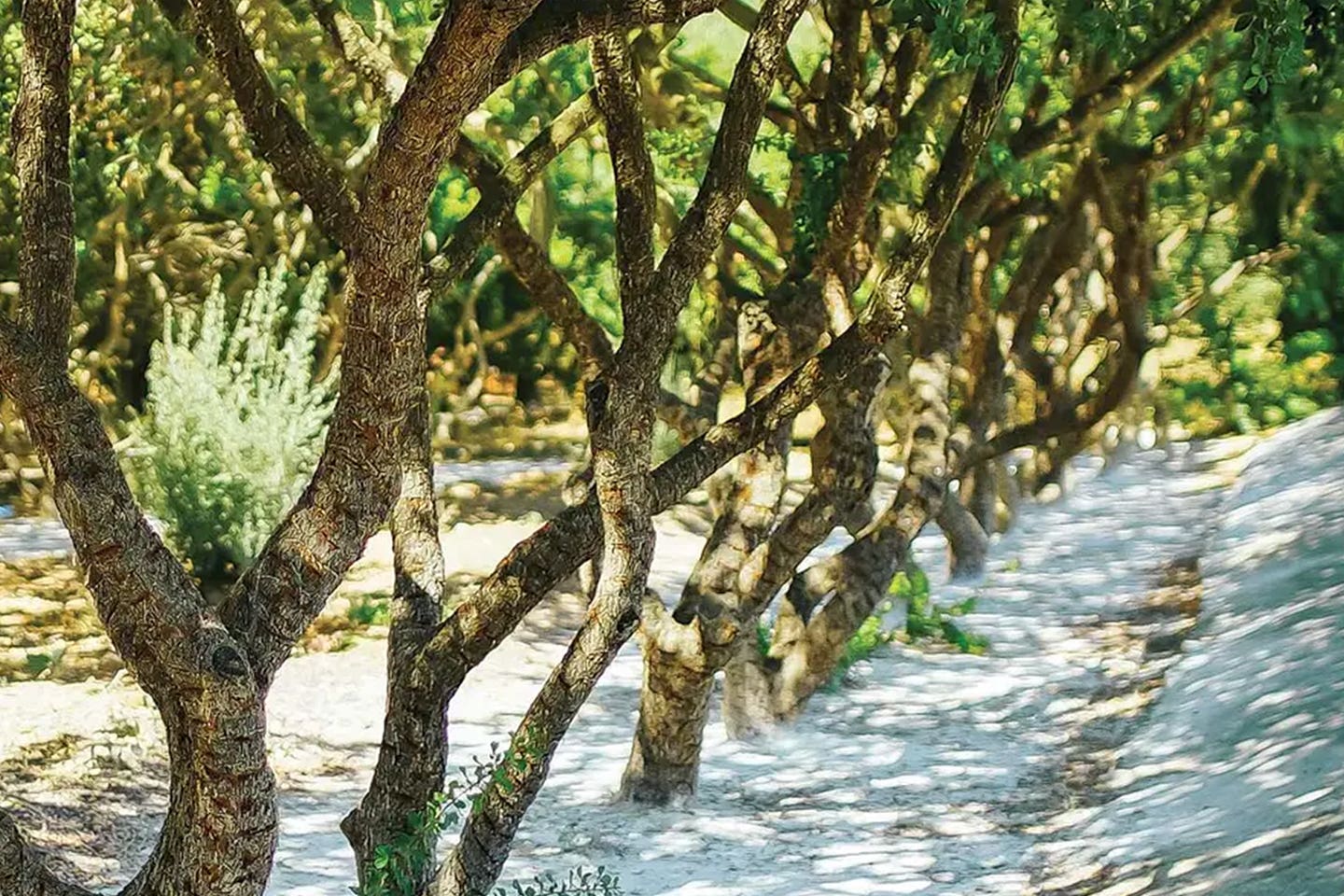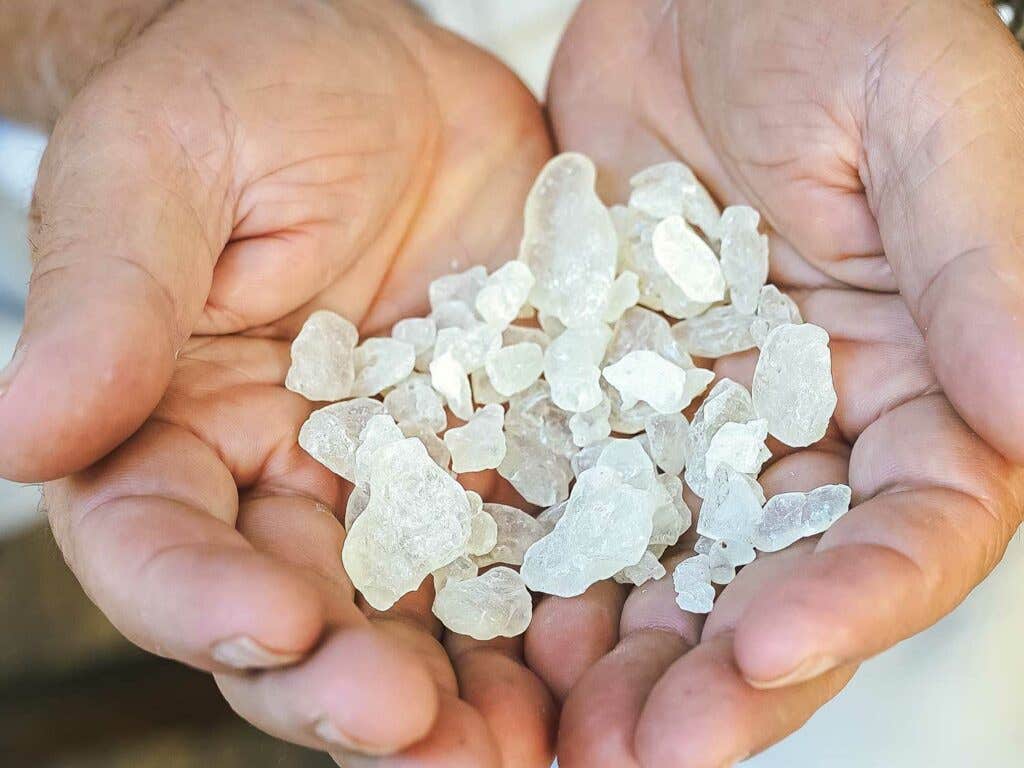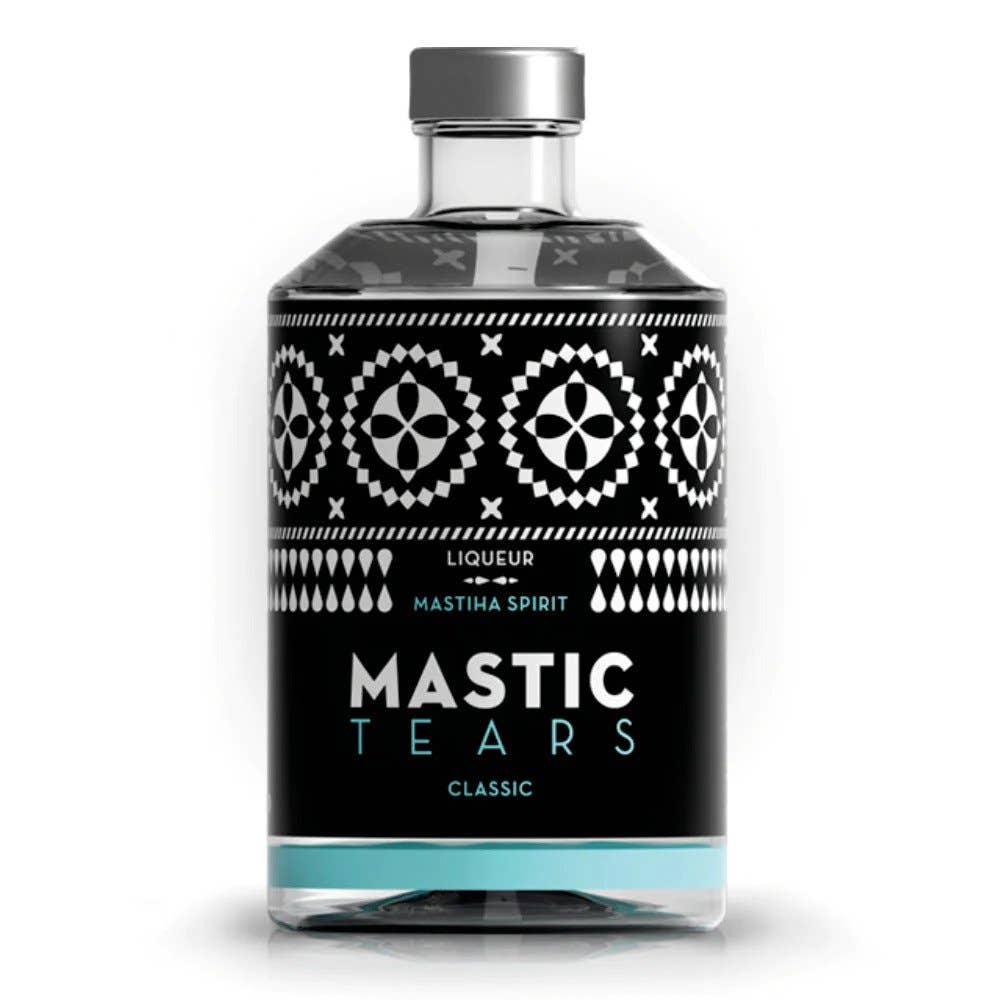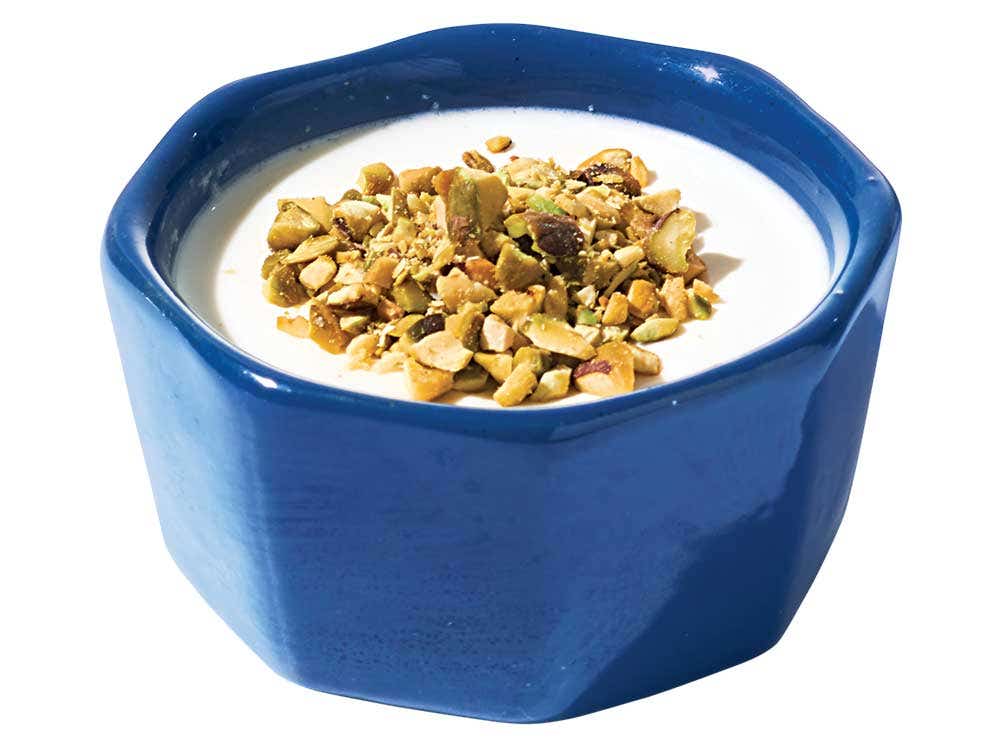On the Greek Island of Chios, One Tree Rules Them All
This piney-tasting sap flavors everything from liquors to candy

There’s an art to making mastic trees cry.
It takes a little bit of pressure to lodge the tip of a pick into the bark and pull it across the tree in a process called kentima, or sewing. Too little force and nothing happens; too much and you risk damaging the tree, drying up its precious resin long before retirement age. The incision should immediately start to shimmer with oozing sap, which will eventually elongate into sticky, glittery tears.
Chios mastiha, or mastic, has a distinct, piney taste that people either love or hate. When it dries off the tree, you'll find it in opalescent white pieces of varying shapes and sizes. While perfectly edible in this form—a chewy, slow-dissolving candy—it is also consumed in a variety of other ways. One of the most common, especially in Greece, is known as a submarine. A mastic solution, a ghostly translucent white, is wrapped around a popsicle stick in a sticky blob, then placed in a cup of ice-cold water. The blob is removed, leaving behind a flavored drink. Mastic is also blended into ice creams, cookie doughs, and cake batters, and it is used to flavor everything from salts and sugars to gums, liqueurs, and olive oil. Mastic is said to help with digestive woes and cavities, and depending on how passionate a producer you ask, it can heal pretty much anything.
While mastic trees are found in other parts of the world, the Greek island of Chios is the only place where the trees produce a resin this flavorful in such quantity. (Chios mastic has protected status from the European Union.) For this island, mastic is everything. Their economy has relied on the sap for centuries, exporting it as early as 330 A.D. to Egypt and Syria, and today largely to the Middle East. When Chios became part of the Ottoman Empire in 1566, residents in the mastic villages (known as mastichochoria) were exempt from certain taxes and obligations.
Ageliki Melekos, a producer in Chios who lives in Pyrgi—a mastichochoria famous for its elaborately decorated houses—has worked her family’s mastic trees for eight years. Their small grove is a five-minute drive outside the village. “We live from mastiha,” she says. “If there is no mastiha, there is no money, no life.”

Seventy-eight-year-old farmer Michael Stamoulas says that the basic cultivation methods have stayed the same since he began working with the trees as a child. He starts the kentima process in June, when he covers the ground in calcium carbonate, a white powder that keeps the fallen sap from sticking to dirt and grass. He scores the trunks once a week, starting from the ground and eventually moving up to the highest branches, until almost the entire tree is etched with dark incisions. Once the tears drop to the ground, Stamoulas leaves them to dry for about two weeks. He then gathers the hardened resin and cleans it in a basin of water with salt or calcium carbonate. Clean mastic floats to the top. (After it’s washed, it is dried out on the floors of people’s houses.) His wife, Paraskevi, says that even as youths, they knew its importance. She would pick up bits of mastic after the season’s end and sell them to buy a new dress. “To us, they are like diamonds.”
Mastic Panna Cotta
This simple dessert is an excellent vehicle for showcasing the peculiar, piney flavor of mastic. Undissolved bits of the resin might get stuck in the sieve; to clean, submerge the strainer in boiling water until the resin melts away. Get the recipe for Mastic Panna Cotta »
The dried resin of the mastic tree has been used throughout Greece, the Middle East, and North Africa for centuries as a flavorant, medicine, and even a form of chewing gum. The ubiquitous method of working it into desserts—pulverizing the resin into a fine powder, then dissolving it into hot cream—has won our hearts. Try it in pastry cream, gelato, or this panna cotta.
Keep Reading
Continue to Next Story












